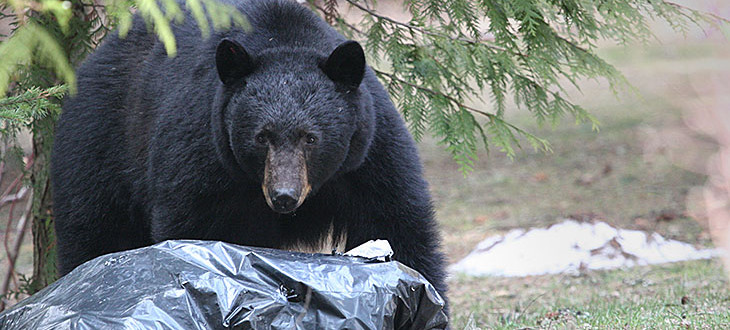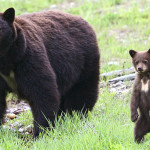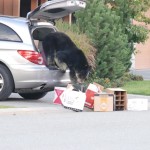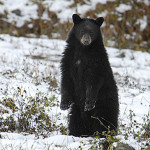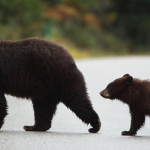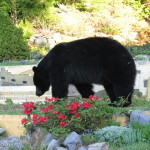What is Food Conditioning?
Food conditioning is a term that is often mis-used to label a bear as a candidate for a death sentence, suggesting that once he has tasted human food/waste, he can never forage for wild food again. The notion is absurd and there is absolutely no science to back up this false belief.
So what is conditioning then? “Conditioning” is a simple learning technique we use to train our pets by giving them positive feedback or a food reward if we want them to repeat a behaviour. Bears, too, can be trained, usually through a crucial experience that initiates the chain of behavioral change. First, bears need an opportunity to learn where to get nutrient rich food from people. In time, the bear may choose to repeat the behaviour that produces the (food) reward.
For example, if a bear is attracted to the smell of garbage in a can, he may push the can over, exposing the contents for consumption. The animal’s action of pushing over the can was instrumental in obtaining a reward (food). Bears have the ability to learn from a single experience and this process may be all that is necessary for the animal to become conditioned to push over garbage cans to obtain food. As a result of learning, if the bear encounters garbage cans in the future, with or without any food odours, he may investigate them. In addition, the association between the smell and the reward has been made. In this situation, the bear would likely be attracted to similar smells (eg. garbage on a porch). Regardless of the type of attractants, once bears have been successful in obtaining human foods, without any negative experience, they begin to develop new behaviour patterns and may continue to seek food at human use sites.
Cubs may also learn the fundamental skills of survival from their mother. If the mother spends most of her time foraging for food at a landfill or from another human garbage source, the cubs will learn this behaviour. They may choose to continue using this feeding strategy when they are on their own, or not; it’s all very individual. In fact, the science shows that half of cubs who learn to access human food/waste with their mothers will continue to do so as they get older; while half of wild bears will do the same. Even adult bears possess the ability to learn through observation of other bears. Bears are highly intelligent creatures and effective learners. Throughout their life bears remain curious and continue to learn through trial and error.
That is not to say that a bear will never pass through an attractant-free area, as they may be there for other reasons e.g. a young bear or a mother with small cubs make seek refuge in peopled areas where they can hide from more dominant bears.
The only thing that will ultimately keep a bear out of any area is a well-maintained electric fence.

